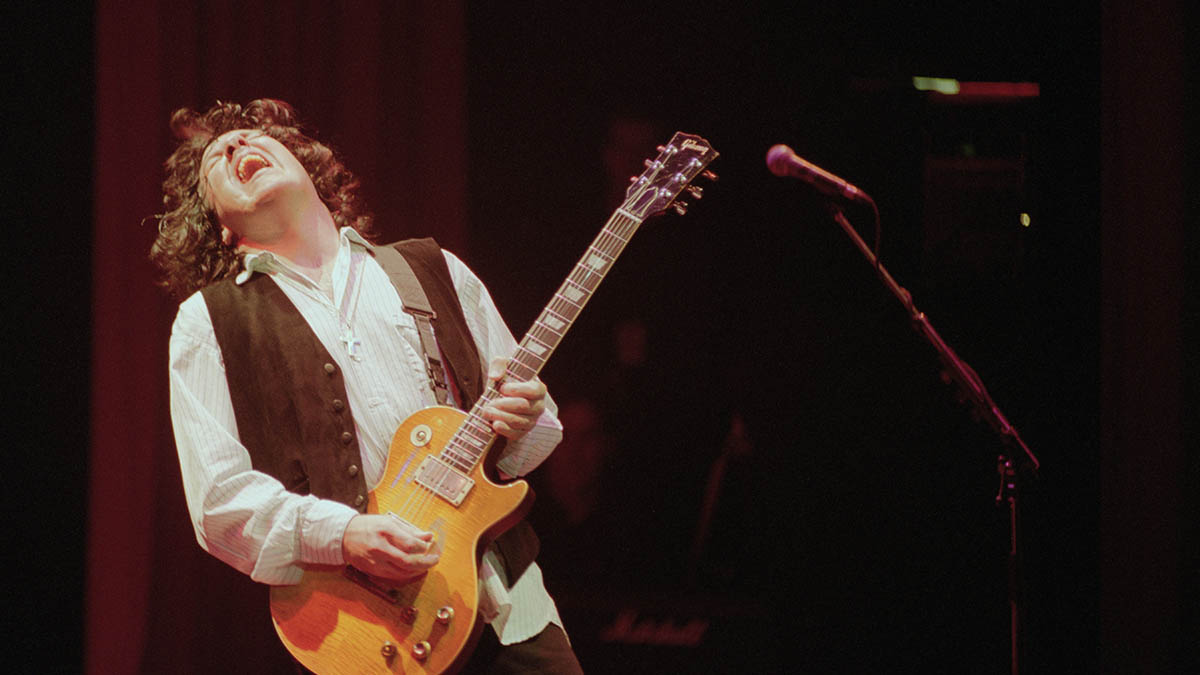Learn Gary Moore’s soloing secrets
The blues-rock great’s solos were expressive, emotive, peerless: this lesson unpacks the dynamics, phrasing and power behind his approach

Blues and rock – arguably one of the greatest pairings in music history and one that few artists are able to embody as fully as Gary Moore. Born in 1952 in Northern Ireland, Moore picked up a guitar aged 10, taking inspiration from players associated with the British blues boom, most notably Peter Green and Eric Clapton, with John Mayall’s Bluesbreakers.
This blues influence was integral to his style but he moved away from this in his early career, instead making music based heavily in the rock camp as both a solo artist as well as briefly with Thin Lizzy.
Through the ’80s, fans saw Gary move further in to hard rock and even heavy metal territory, but his love of the blues underpinned everything and he was known to warm up before shows by playing blues licks in his dressing room. This led Gary to the decision to move away from his hard rock persona and commit to playing the blues.
This style, sculpted by years of playing hard rock and metal, had an edge that is not so common in more traditional artists. There was an aggressive quality to his playing, with a seemingly unlimited amount of power and passion under his fingers. Fiery bursts of lighting fast lines would shoot from his speaker cabinet, punctuated with slurs, trills and his trademark vibrato, all delivered with an intimidating but thrilling listen.
Gary was no one-trick pony though. While his rock past had left him with incredible technique and blistering speed, he was also capable of, and indeed celebrated for, a sensitivity to taste, melody and expression, and our studies in this lesson aim to focus in on this melodic, subtle side of the guitarist. The singing solos on his softer tracks were full of passion and emotion, weaving long sustained notes and melodic motifs, telling a story to his audience.
Each solo was a masterclasses in leaving space, his phrases punctuated with moments of silence that allowed the listener to digest Gary’s last lick, creating a wonderful tension that was released with the next melody.
It is worth noting the restraint required to play in such a disciplined way, especially considering the capabilities of such an accomplished guitarist. A lesser musician may be tempted to overuse such ability but Gary had an impeccable taste for note choice, executing solos that always seemed to land the right notes in the right places.
This concept was drilled in to Gary by way of advice from none other than Albert King, who recommended that the guitar play every other lick, stressing the importance of not overplaying.
This sense of melody and space, combined with the subtlety of dynamics and vibrato, and the controlled power behind the scenes makes for an incredibly soulful musician whose playing style, despite having the facade of hard rock, had its heart rooted firmly in the blues.
Get the tone
Amp Settings: Gain 8, Bass 5, Middle 7, Treble 4, Reverb 5
Gary is a well-known user of one of the most classic combinations in the history of the electric guitar: the pairing of a Gibson Les Paul and Marshall amp. His tone was thick and saturated with a large helping of mids. Dial in a decent amount of gain to add sustain to string bends and plenty of reverb will help to get close to Gary’s signature tone.
Example 1. Moody ballad with sustained notes
This study demonstrates Gary’s use of sustained string bends with his signature vibrato. Intonation should be a focus here as these held notes, especially those with no vibrato, can be tricky to get dead in tune.
We also have a couple of fast pentatonic runs which Gary would add to his melodic playing for bursts of intensity and excitement. Aim to execute these as cleanly as possible, practising slowly at first and working up to the full tempo.
Example 2. Playing minor blues
This track demonstrates Gary’s melodic phrasing in a more traditional minor blues context. The use of space is particularly important here as it creates a sense of anticipation and we can see how leaving a gap between phrases can add tension and release within a solo.
This can be a difficult thing to achieve when improvising so work on applying this concept to your own playing; think of how a horn player takes breaths between phrases and you won’t go far wrong.
Get The Pick Newsletter
All the latest guitar news, interviews, lessons, reviews, deals and more, direct to your inbox!
David is a guitarist, producer, and educator. He has performed worldwide as a session musician, with artists and bands spanning many musical genres. He draws upon over 20 years of experience in both live performance and studio work, as well as numerous composing credits. As a producer, he's collaborated with artists across genres, including pop, RnB, and neo soul. David holds a master’s in jazz guitar and teaches at BIMM London and the London College of Music. He is also a regular contributor to Guitar Techniques magazine, sharing his love of blues in a monthly column.










![Joe Bonamassa [left] wears a deep blue suit and polka-dotted shirt and plays his green refin Strat; the late Irish blues legend Rory Gallagher [right] screams and inflicts some punishment on his heavily worn number one Stratocaster.](https://cdn.mos.cms.futurecdn.net/cw28h7UBcTVfTLs7p7eiLe.jpg)
